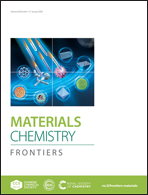Nano-based theranostic approaches for infection control: current status and perspectives
Abstract
Infections caused by bacteria and fungi are a substantial healthcare burden worldwide, leading to great socioeconomic impacts. Current treatments using antibiotics are facing challenges arising from antimicrobial resistance and new drug deficiency. Recent advances in photo/sonotherapy provide novel and efficient approaches to controlling infections, while the utilization of sensitive and rapid detection methods enables early prevention of microbial infections, maximizing the chances of successful treatment outcomes. Meanwhile, the development of nanotechnology provides an innovative strategy to integrate the therapeutic and diagnostic modalities into one system, and overcome their inherent physical or chemical drawbacks. In this review, the most updated strategies for controlling infection and detecting bacteria and fungi are elaborated. As different nanomaterials have varied natures and properties, the designing principles and action mechanism of representative nanotheranostic platforms published within the last seven years are summarized and discussed. This review also highlights the perspectives and relevant rational designs of nano-based theranostic platforms for infection control, and addresses the potential bottlenecks in clinical translation.

- This article is part of the themed collection: 2023 Materials Chemistry Frontiers Review-type Articles


 Please wait while we load your content...
Please wait while we load your content...